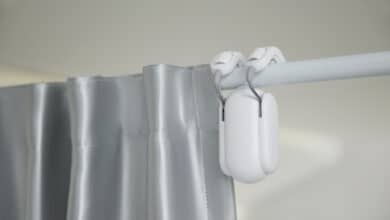
Let’s face it, because I think we need to – wearable technology is all the rage these days! I’ll use smartwatches as an example; these nifty portable computers, which you can strap to your wrist, are pretty much taking over the world, one user at a time. Devices like these have the potential to enrich our lives in a surprising number of ways; we can thank them for health data, Augmented Reality, and for keeping us entertained… just to name a few!
But what counts as wearable technology, exactly, and what’s so special about it? In this article, we’ll be exploring the concept in greater detail, as well as considering the different ways in which wearable technology is changing our lives in very real ways.
Background: The Origins and Roots of Wearable Technology
Wearable technology is becoming an increasingly present part of day-to-day life. You’d be hard-pressed to visit the gym, park, or even the office nowadays without at least seeing someone sporting a smart watch; and that’s without considering subtler kinds of wearable technology, some of which are practically invisible to the naked eye. Indeed, the increasing popularity of wearable technology is hard to escape, and its ubiquity is something that will likely have some pretty major significance for our societies on the whole as time goes by.
However, wearable technology can be considered to be much older than we initially may have thought. Glasses and watches are effectively the first kinds of wearable technology that we’ve seen, with spectacles being invented sometime around the 1300s. Watches, on the other hand, first saw production sometime in the 1500s.
So, it’s safe to say that wearable technology, as a concept, is truly far from being a recent thing! While the term might conjure up images of something very high-tech, it’s obviously not quite the case for a majority of the market. I’d argue that it’s a matter of philosophy, too – we need to reflect on what we consider to be (or not to be) wearable technology in the first place.
For instance, some might say that devices like pacemakers are a type of wearable technology. Clearly, this is a different thing entirely to fitness trackers or something like a VR headset, which are mostly made for consumers to simplify or enhance different aspects of life. But pacemakers, which are implanted into the chest or part of the abdomen, can and do save lives all the time.
We’d argue, therefore, that wearable technology represents massive potential for good in all kinds of sectors and spheres. It’s down to mankind to transform this powerful potential into something truly life changing.
The Ways Wearable Technology is Changing the Game
Healthcare
One industry where wearable technology truly is shaking things up is in the healthcare sphere. Wearable technologies make for an effective and convenient means of recording users’ health data; measurements like blood pressure and heart rate can be taken and recorded easily with devices like smart watches.
Thanks to the inherently inobtrusive nature of wearables, it’s easy to keep track of different health parameters with the user almost forgetting they’re even there. Data like these can then be applied to help wearers improve their health and sports performance, and, in some instances, may even notice potentially dangerous conditions like heart arrhythmias. Fitness trackers like the Amazfit GTS 2 Mini are just one way that this can be achieved with minimal burden to the wearer.
Entertainment
The entertainment world is rich with potential for wearable technology to shake things up. Virtual Reality is probably the most obvious example of this; VR headsets have every opportunity to change the way we engage with visual and audio media.
Add video games into the mix, and we can very easily see all the ways that new tech can make inroads into the entertainment sector. Let’s be honest, not everyone is rushing out to buy themselves a personal VR headset – at least, not yet anyway. But it seems obvious that this new tech is going to take on a bigger and bigger role in our lives as time goes by.
Informational Enrichment
It’s simple – Augmented Reality is here to stay. It works effortlessly in tandem with so many kinds of wearable technology, allowing us to learn and develop our skills in a uniquely immersive and memorable way. One way AR is applied is through training on the job, for instance; there are various kinds of wearables that support AR overlays, which provide supplemental information that supports and deepens the learner’s experience of whatever they’re being shown.
Of course, the potential for AR wearables to supplement the way we learn goes far beyond workplace training, too. Technologies like these are perfect for learning environments and schools, as they do a great job of keeping kids engaged while they take in latest information.
They can also be used in the arts sector; museum exhibitions and displays, for instance, can benefit greatly by being supported by AR wearables. These nifty gadgets can display graphical overlays or information cards that give context or depth to artefacts, artworks, and so much more. This is one area where modern technology like this is pretty much guaranteed to stick around… for better or for worse!


